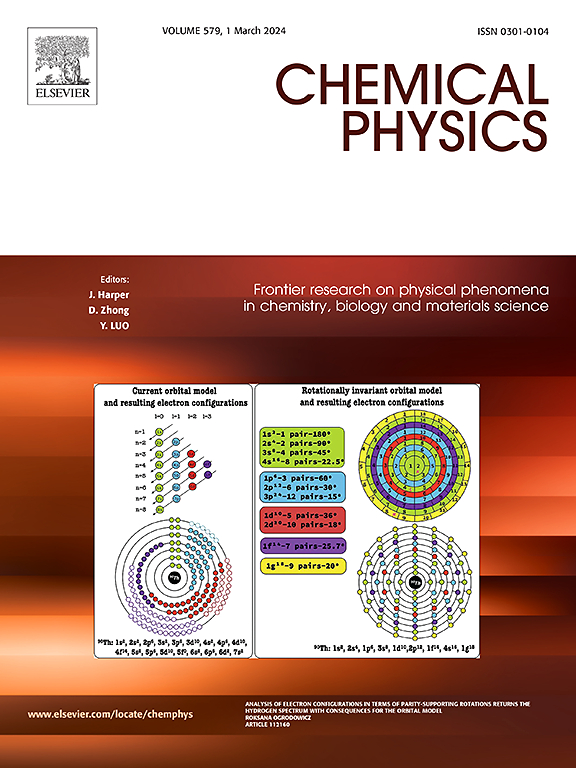探索静水压力对光电用钛基钙钛矿氧化物基本物理性质的影响
IF 2
3区 化学
Q4 CHEMISTRY, PHYSICAL
引用次数: 0
摘要
利用密度泛函理论(DFT)系统地研究了QTiO3 (Q = Sr, Ca)的压力诱导物理性质,以探索其在光电和白光发光二极管(w- led)器件中的潜在应用。在0 ~ 40 GPa的压力范围内分析了材料的结构稳定性、电子能带结构、光吸收、弹性性能和力学稳定性。负声子的缺失证实了QTiO3 (Q = Sr, Ca)的动力学稳定性。SrTiO3和CaTiO3化合物的介电函数虚数部最大值分别为5.1298 (40 GPa)和5.3373 (40 GPa) eV,是w- led节能荧光粉的理想候选材料。弹性和力学分析证实了它们在高压环境下的稳定性,确保了它们在实际应用中的可靠性。这些理论发现通过压力工程对QTiO3 (Q = Sr, Ca)的可调性提供了有价值的见解,为其在下一代光电和w-LED技术中的优化应用铺平了道路。本文章由计算机程序翻译,如有差异,请以英文原文为准。
Exploring the role of hydrostatic pressure on the essential physical properties of Ti-based perovskite oxides for optoelectronic applications
The pressure-induced physical properties of QTiO3 (Q = Sr, Ca) have been systematically investigated utilizing density functional theory (DFT) to explore their potential usage in optoelectronic and white light-emitting diodes (w-LEDs) devices. The structural stability, electronic band structures, optical absorption, elastic properties, and mechanical stability were analyzed under pressures spanning from 0 to 40 GPa. The absence of negative phonon confirms the dynamical stability of QTiO3 (Q = Sr, Ca). The imaginary part of dielectric function has maximum values at 5.1298 (40 GPa) and 5.3373 (40 GPa) eV for SrTiO3 and CaTiO3 compound, making such substances promising candidates for energy efficient phosphors in w-LEDs. The elastic and mechanical analysis confirms their stability under high-pressure environment, ensuring their reliability for real-world applications. These theoretical findings give valuable insights into the tunability of QTiO3 (Q = Sr, Ca) through pressure engineering, paving the way for their optimized use in next-generation optoelectronic and w-LED technologies.
求助全文
通过发布文献求助,成功后即可免费获取论文全文。
去求助
来源期刊

Chemical Physics
化学-物理:原子、分子和化学物理
CiteScore
4.60
自引率
4.30%
发文量
278
审稿时长
39 days
期刊介绍:
Chemical Physics publishes experimental and theoretical papers on all aspects of chemical physics. In this journal, experiments are related to theory, and in turn theoretical papers are related to present or future experiments. Subjects covered include: spectroscopy and molecular structure, interacting systems, relaxation phenomena, biological systems, materials, fundamental problems in molecular reactivity, molecular quantum theory and statistical mechanics. Computational chemistry studies of routine character are not appropriate for this journal.
 求助内容:
求助内容: 应助结果提醒方式:
应助结果提醒方式:


